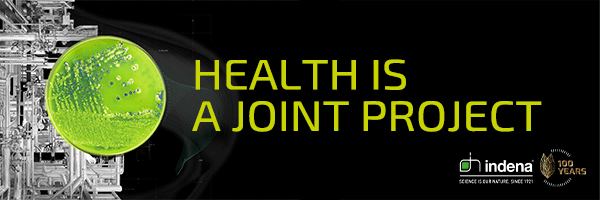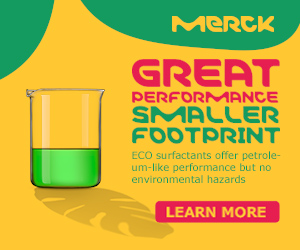Cosmetics & Personal Care
Trends in cosméticos 12th July 2019
By Sarah Harding, PhD
Latin America’s pulsating cosmetics and personal care market has famously given rise to a number of beauty trends. In part
Added to this is the enigma of the Amazon. A number of companies are finding huge success through providing natural ingredients that are sourced from the Amazon rainforest and other ecosystems. One such example is Beraca, an innovative Brazilian company that offers natural, organic oils, butter, clays and multi-functional ingredients for use in the cosmetics, pharmaceutical, and personal care industry worldwide.
Similarly, O Boticário’s product lines of body and facial care, sun care, makeup, deodorizing colognes, deodorants, soaps and shampoos include extracts from Amazonian plants such as açaí (pronounced “ah-sigh-ee”), cupuaçu, carnaúba, guaraná, cashew and passion flower. CativaNatureza, recognised as one of the key players in the Brazilian organic industry, offers formulations with unusual concoctions and ingredients such as yerba mate mulateiro extract and coriander oil.
The key to her success, says La Corte, is her ability to relate to people of different cultural backgrounds, and to earn their respect and trust. “Most of them generally do not want to divulge their local regimens, but once they connect with me they open up and share unique rituals they grew up with using local ingredients from nature,” she explains. “And of course, we want to learn how they use some of the these magical ingredients and remedies from these regions, such as which part of a fruit or vegetable, pulp versus the rind or seeds.”
Focused on spotting trends before they become trends, most of La Corte’s treks are funded by forward-thinking R&D Head, as well as Global Marketing, who are looking for something… well, something different. “My intel is based on learning from locals their regimens, remedies and usages, alternative ways to protect skin, hair, eyes , digestive health, etc. These things are not found in a book, they are unique insights shared with me by locals and uncovered on my treks,” she adds. Having already spent much time in the Amazon, La Corte is planning to bring back the Brazil trek this November after focusing on Asia and India for the past few years. We’re intrigued to see what she’ll bring back this time!
In 2017, Brazilian cosmetics company Natura acquired The Body Shop – formerly the flagship of British natural cosmetics and personal care – demonstrating the country’s dominance in this field. However, while Brazil is a striking representative of the Latin American market, and its impact on driving the overall market in the region is noteworthy,1 other countries mustn’t be overlooked. Mexico, Argentina, Colombia and Chile also show dynamic and robust beauty markets and, owing to stable economic growth and development, the region as a whole offers a promising market for active cosmetic ingredients. Furthermore, since most of the countries in the region are developing markets, the market for active ingredients for cosmetics is projected to increase.
 2019-04 Figure 1.png)
The demand for active ingredients for cosmetics in the region is driven by skin lightening agents, anti-aging agents and conditioning agents, and other skincare applications. As in other parts of the world, Latin America is seeing a push towards sustainability and ‘free-from’ products, while demand for enhanced functionality and multiple benefits from a single product is steadily increasing. For instance, BB (Blemish Balm) cream, which is promoted as multifunctional product, claims to treat various skin related problems like anti-aging, skin brightening, and sun protection. From BB, CC, and DD creams, to post-shave moisturizers with sun protection from UVA and UVB rays, there is increasing demand for products that target two or more concerns at the same time. Consumers in Latin America are particularly keen to go for skin care products with sun protection features, as they are aware of the harmful effects of UV radiations. Also, the number of people using fairness and whitening products is growing, further driving the growth of these multifunctional products.
 2019-04 Figure 2.png)
In conclusion, the Latin American region is a hot-bed of exciting new ingredients and trends, many of which are yet to be discovered by the western world. The Amazon, in particular, is a rich source of natural ingredients, many of which can be applied to the cosmetics and personal care industries. As well as providing a unique source for such ingredients, the region offers a strong market for their use, as the active ingredients market for cosmetics in South America is expected to witness a healthy growth rate in years to come. Factors such as the positive macroeconomic factors, growing retail industry, and an increasing demand for multifunctional ingredients are all likely to support the growth of the sector in this vibrant region.
- MarketsandMarkets. Active Ingredients Market for Cosmetics, January 2017 (https://www.marketsandmarkets.com/Market-Reports/active-ingredient-cosmetic-market-195264084.html#utm_source=GuestPost_TN&utm_medium=TN&utm_campaign=Guest_Posts&utm_content=TN_guestposts).
Marguerite La Corte, Global Trend Tracker & Cultural Anthropologist, for talking to us about her work. Her remaining 2019 programme includes innovation research treks to Asia-3 (Indonesia, South Korea, Japan) in August and Brazil 5 States or LATAM 2–3 Countries in November. In spring 2020 she will embark on a trek to India. For more information, and to find out about owning one of the proprietary categories, visit www.margueritelacorte.com or email daisyvino2@yahoo.com



